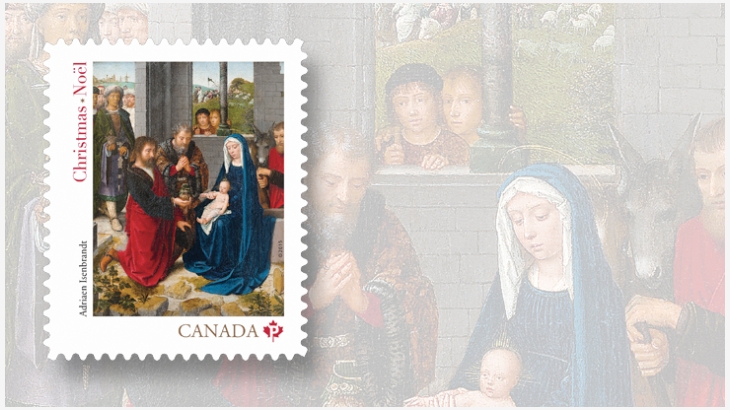 Is faith without thinking true faith? Is there a danger in holding presumed certainties without testing them against reality? Shouldn’t a robust Christian worldview be able to stand up against scrutiny to be not only true but also attractive, granting higher dignity to the human person than any alternative?
Is faith without thinking true faith? Is there a danger in holding presumed certainties without testing them against reality? Shouldn’t a robust Christian worldview be able to stand up against scrutiny to be not only true but also attractive, granting higher dignity to the human person than any alternative?
Bible Gateway interviewed Nancy Pearcey (@NancyRPearcey) about her book, Finding Truth: 5 Principles for Unmasking Atheism, Secularism, and Other God Substitutes (David C. Cook, 2015).
How does your experience as a former agnostic equip you to write this book?
Nancy Pearcey: What motivated me to write Finding Truth is the large number of young adults who leave home and leave their Christian faith behind. And the reason I’m so passionate about the problem is that this was my own story, too.
In high school, I came to realize I had a second-hand faith, derived from my parents and family background. I had no actual reasons for believing it. So I began asking, ‘How can we know Christianity is true?’
Sadly, none of the adults in my life offered an answer. Eventually I decided Christianity must not have any answers, and I became an agnostic.
Later while attending school in Europe, I stumbled upon L’Abri, the ministry of Francis Schaeffer in Switzerland. Here, for the first time, I met Christians capable of engaging the secular “isms” I had embraced. I discovered that Christianity does have the resources to meet the challenges posed by competing worldviews after all.
The goal of Finding Truth is to give young people—and their parents, pastors, and teachers—the strategies for showing not only that Christianity is true, but also why it’s true.
One chapter is titled, “How Critical Thinking Saves Faith.” How are these two things connected?
Nancy Pearcey: In studies asking why young people left their family religion, their most frequent response was unanswered doubts and questions. The researchers were surprised: They expected to hear stories of broken relationships and wounded feelings. But the top reason given by young adults was that they did not get answers to their questions.
The empirical research underscores how important it is for parents, pastors, and teachers to take young people’s questions seriously.
Christian adults need to think about talking to our own children as a form of cross-cultural missions. Today cultural change happens so quickly that teens are exposed to ideas and worldviews very different from those of previous generations. Our job is to study the language and thought patterns of our children’s generation as carefully as if we were preparing to travel to a foreign country as missionaries.
Ultimately, apologetics should be driven by love. We should love people enough to listen to them and do the hard work of finding answers to their questions.
The book’s subtitle is 5 Principles for Unmasking Atheism, Secularism & Other God Substitutes. What are “God substitutes”?
Nancy Pearcey: The book’s five principles are from Romans 1 where Paul gives the case for God from general revelation. Principle #1 is that every non-Christian perspective creates an idol: It “exchanges the glory of God” for something in creation (Romans 1:23, 25). An idol is anything put in the place of God as the ultimate reality—the eternal, self-existent, uncaused cause of everything else.
An idol is not necessarily something concrete, like a golden calf. It can also be something abstract, like matter. Is matter part of the created order? Sure it is. So the philosophy of materialism qualifies as an idol in the biblical sense.
What about reason? Can it be an idol? Certainly. The philosophy of rationalism puts human reason in the place of God as the source and standard of all truth.
When we encounter the world of ideas for the first time, we easily get overwhelmed. Scripture is telling us, ‘Don’t be distracted by the details. Cut to the core by asking, What is its idol?’ Whatever functions as its God substitute will shape everything else.
What role does the Bible have in a Christian’s thinking and worldview?
Nancy Pearcey: The most exciting feature of Finding Truth is that it derives all five principles from the Bible. Let’s keep going to Principle #2—which is that every idol-based philosophy will ultimately fail. Why? Precisely because it makes a God-substitute out of some part of the created order.
The problem is that a part is always too limited to explain the whole. You might picture a worldview as trying to stuff the entire universe into a box. Invariably, something will stick out of the box. Its categories are too “small” to explain the world.
As a result, it will lead to an inhumane view of the person. To use biblical language, those who exchange the glory of God for something in creation will also exchange the image of God for something in creation—and because it is something less than God, it always leads to a lower view of humanity.
Let’s use materialism as an example, since it’s the underlying assumption in virtually every subject area in the academic world today. The most consistent versions of materialism deny the reality of anything beyond matter—no soul, no spirit, no will, no mind. This is called reductionism: Humans are reduced to biochemical machines. For example, Richard Dawkins says humans are nothing but “survival machines—robot vehicles blindly programmed” by their genes.
But are we really machines? Of course not. No one lives like a robot. We all make choices from the moment we wake up in the morning. One philosopher jokes that if people deny free will, then when ordering at a restaurant they should say, “Just bring me whatever the laws of nature have determined that I will get.”
The beauty of this argument is that you don’t have to be a Christian to recognize that materialism does not match reality. Materialism is not true to universal human experience—what we all know about ourselves. Thus this type of argument can be effective when young people are having doubts or facing questions from their secular friends.
How is Christianity more appealing than competing worldviews?
Nancy Pearcey: We have to go beyond negative arguments and show that positive evidence for God is “clearly seen” in creation as well (Romans 1:20). Most important, there’s humanity itself: Because humans are capable of choosing, the first cause that created them must have a will. Because humans are capable of thinking, the cause that created them must have a mind.
In short, the cause must be equal to the effect. As one Christian philosopher sums it up, because a human is a someone and not a something, the source of human life must also be a Someone—not the blind, automatic forces of nature, as philosophies like naturalism and materialism tell us.
As the Bible puts it, “He who planted the ear, does he not hear? He who formed the eye, does he not see?” (Psalm 94:9).
Again, you don’t have to be a Christian to recognize that this argument makes sense. The case for a Creator fits our most universal experience of human nature—what we know about ourselves. General revelation is so compelling that people are “without excuse” (Romans 1:20).
Who are “free-loading atheists”?
Nancy Pearcey: To be most relevant, we can build a positive case at the very points where atheists themselves admit their worldview does not work.
For example, today there are unprecedented numbers of movements for human rights and freedoms. But as we just saw, the dominant worldviews in academia today, like materialism and naturalism, deny the reality of freedom, reducing humans to robots. So where does the concept of human rights come from?
The late American philosopher Richard Rorty, though himself an atheist, said universal human rights came from “religious claims that human beings are made in the image of God.” He admitted that he had to borrow the concept of rights from Christianity—and even called himself a “free-loading” atheist.
British atheist John Gray agrees: “Darwin has shown us that we are animals.” Any attempt to frame an atheist concept of human dignity “is only a secular version of Christian faith.” It is “a derivative of Christianity.”
Atheists often denounce the Bible as harsh and negative because of its teaching on sin. But in reality it offers a much more humane view than any competing worldview. It is so appealing and attractive that atheists keep free-loading the parts they like best!
No wonder Paul says he is “not ashamed of the gospel” (Romans 1:16).
Because the five principles in Finding Truth are derived from Scripture, we can be confident they will always apply. One of my students wrote, “The biblical strategy of critique you taught has been incredibly helpful to me, not just in class but in my life—reading books and watching movies.”
These principles will give you the confidence to “give an answer to everyone who asks” (1 Peter 3:15).
Bio: Nancy Pearcey is author of the 2005 ECPA Gold Medallion Award winner Total Truth: Liberating Christianity from Its Cultural Captivity and the 2000 ECPA Gold Medallion Award winner (coauthored by Harold Fickett and Chuck Colson) How Now Shall We Live? Formerly an agnostic, Pearcey studied under Francis Schaeffer at L’Abri. She earned an MA from Covenant Theological Seminary and pursued further graduate work in History of Philosophy at the Institute for Christian Studies in Toronto.
Heralded as “America’s pre-eminent evangelical Protestant female intellectual” (The Economist), Pearcey is professor and scholar in residence at Houston Baptist University. She is a fellow of the Discovery Institute and editor-at-large of The Pearcey Report. As founding editor of BreakPoint, she also coauthored a monthly column with Chuck Colson in Christianity Today. Pearcey has contributed to several books and published more than a hundred articles. She has spoken in the US Capitol and the White House; at universities such as Princeton, Stanford, and Dartmouth; to actors in Hollywood and artists in New York City; on NPR and C-SPAN. Her books include The Soul of Science: Christian Faith & Natural Philosophy and Saving Leonardo: A Call to Resist the Secular Assault on Mind, Morals, and Meaning.





 A Yellow Day is taking both the challenges and the triumphs encountered in a day and using them to become a better person. The new movie Yellow Day shows people who have faced tragedies and overcome them. It’s a partially-animated movie based on true stories in the outreach community, made for parents and children to watch together, to show children how they can make their day Yellow and become better people in the process.
A Yellow Day is taking both the challenges and the triumphs encountered in a day and using them to become a better person. The new movie Yellow Day shows people who have faced tragedies and overcome them. It’s a partially-animated movie based on true stories in the outreach community, made for parents and children to watch together, to show children how they can make their day Yellow and become better people in the process.





 ¡Nos complace anunciar que tenemos disponible un nuevo
¡Nos complace anunciar que tenemos disponible un nuevo 






